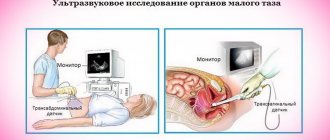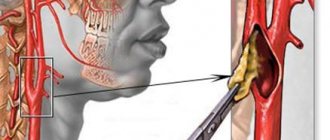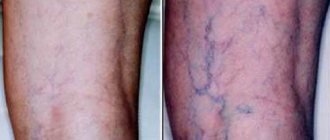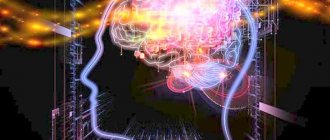Symptoms of nervous numbness in fingers, arms, legs, face
Nervous paresthesia manifests itself:
- lack of sensation of touch (sometimes it may seem that parts of the body are “frozen” with the introduction of local anesthetics);
- tingling (as if needles are running);
- slight burning sensation.
Unpleasant sensations can affect very small or large areas of the body. Most often they appear on:
- hands and feet, especially fingers;
- face (most often in the mouth area);
- language;
- legs and arms (in addition to hands and feet);
- scalp and back of the neck.
Numbness caused by mental causes can persistently affect one area of the body. Or it can migrate, showing itself in a new area every day. It can grow, affecting large areas, and shrink to the size of the phalanx of a finger.
It can be symmetrical on both sides, or it can affect only one half of the body.
The intensity of the unpleasant sensations may vary hour by hour, day by day, month by month... The symptom may either disappear completely or reappear. It may come alone, or it may complement other bodily manifestations of chronic anxiety, depression, etc.
For some, numbness may manifest itself acutely and only at the peak of an anxious-hypochondriacal state, for example, at the time of a panic attack. And someone can be bothered every day, seemingly without obvious mental reasons or stress.
Numbness, no matter where in the body it manifests itself, has many physical causes. This may include prolonged stay in an uncomfortable position, carpal tunnel syndrome, or side effects of certain medications. And there may be even more dangerous somatic illnesses, for example, diabetes or multiple sclerosis. Therefore, before convincing yourself that this or that part of the body is numb and tingling due to nervousness, it is necessary to undergo a medical examination.
Diseases accompanied by high blood pressure and numbness of the legs
If there is numbness in the legs, first of all, osteochondrosis is suspected. This is a disease that affects articular cartilage, deforming it and reducing its elasticity. Depending on the location of the damage, cervical, thoracic and lumbar osteochondrosis is distinguished. The causes of the disease may be:
- injuries;
- infections;
- heredity;
- overweight;
- inactive lifestyle.
As a result, arms and legs go numb, drops in blood pressure, headaches, and nauralgia with all the accompanying symptoms are observed. A similar picture is also caused by intervertebral hernias. High blood pressure, prolonged wound healing, and the smell of acetone may indicate diabetes. This is a disease in which the body produces insufficient or no insulin hormone, causing hyperglycemia.
Leg cramps most often occur in pregnant women.
The condition of cramping the legs is especially familiar to pregnant women. This problem may be associated with varicose veins. With varicose veins, veins become deformed and nodes form. The consequences of advanced disease are thrombophlebitis, ulcers, bleeding of venous nodes, increased blood pressure. The reasons why legs go numb may be a lack of potassium, calcium and magnesium in the body, genetic predisposition, or toxicosis.
If, with high blood pressure and numbness of the extremities, confusion of speech is observed, facial muscle spasms are observed, or a stroke is suspected, urgent medical attention is needed. Other causes of loss of sensation in the legs and arms:
- neuropathy;
- Raynaud's disease;
- obliterating endarteritis;
- tunnel syndrome.
Leg cramps most often occur in pregnant women.
Preparing for “fight and flight” is a physiological cause of numbness in the limbs, head, and neck
If you are in a state of anxiety or stress, your body begins to prepare itself to enter battle or flee from the battlefield. This is a natural animal reaction. And often, in order for it to turn on, it is not necessary to be in a state of acute excitement.
Often people say that they don’t seem to be nervous, but the bodily symptoms of anxiety appear from somewhere. Yes, it may be so. After all, a person who is in a state of chronic stress, suffers from neurosis, may no longer notice the mental problem itself, thinking only about what and where it hurts.
But his body continues to prepare for “fight and flight.” And for this, he takes blood from the skin, distal parts of the extremities, for example, fingers and toes. And gives it to the heart, brain, large muscles.
This is necessary so that the body can run and fight effectively. And also to reduce blood loss during injury.
A side effect of such preparation for battle may be discomfort in the areas from which the blood was taken. This “side effect” does not pose any threat to health. But in suspicious neurotic patients it can cause a lot of fears.
Causes
Typically, numbness is caused by nerve damage, irritation, or compression. When numbness occurs as a separate symptom, it is usually not a cause for concern. However, numbness can be a symptom of a serious illness if it is combined with other symptoms, such as:
- numbness on one side of the body;
- sagging face (facial paralysis);
- speech problems;
- confusion of thoughts.
In such cases, the cause of numbness may be a stroke. A stroke is a life-threatening condition that requires urgent hospitalization to prevent significant damage to brain tissue.
Read also…. In what cases is skeletal bone scintigraphy prescribed?
Numbness in the limbs can also be serious if it occurs along with symptoms such as:
- shooting headaches;
- loss of consciousness;
- confusion;
- dyspnea.
This numbness may indicate the presence of a brain tumor, which may also require urgent medical attention.
Most often, numbness of the extremities is associated with complications of spinal osteochondrosis.
Intervertebral disc herniation
Numbness in the hands occurs with a herniated disc in the cervical spine. Numbness in the legs due to a herniated disc in the lumbar spine. A herniated disc can put pressure on a nearby nerve root, resulting in pain, discomfort, tingling and numbness.
Intervertebral hernia is one of the most common causes of numbness in the arms and legs; However, numbness in the limbs due to a herniated disc is extremely rarely an isolated symptom. For a cervical disc herniation, numbness in the arms and fingers is combined with at least one of the following symptoms:
- headache
- dizziness
- blood pressure surges
- arm pain
- pain in the shoulder, scapula, arm
For a hernia of the lumbar spine, numbness in the leg is combined with at least one of the symptoms: pain in the buttock, thigh, leg or foot.
Spondylosis
Spondylosis is characterized by the formation of osteophytes. Osteophytes are bone growths that develop along the edges of bones. They typically form in places where bones connect to each other. They can also form on the bones of the spine. Most bone spurs do not cause symptoms and are discovered by chance. They may not require treatment. However, if treatment is still necessary, it will depend on the location of the bone growths and their effect on your health. Osteophytes that develop in the spine can cause the space containing the spinal cord to narrow. These bone spurs can pinch the spinal cord or its nerve roots and cause weakness or numbness in the arms or legs;
Sciatica is a pinched sciatic nerve
The sciatic nerve is the longest nerve in our body: it begins in the spinal cord, passes through the hips and buttocks and then down into the legs. The sciatic nerve is responsible for movement and sensation in our legs. Pinching or irritation of the sciatic nerve leads to sciatica.
Read also…. Schinz's disease - symptoms and treatment
Causes of sciatica include:
- intervertebral disc herniation;
- lumbar spinal canal stenosis;
- spondylolisthesis;
- piriformis syndrome.
- Infections
- tumors in the lumen of the spinal canal
Symptoms of sciatica include:
- pain that gets worse with movement;
- numbness and weakness in the leg or foot;
- tingling in the foot and toes;
- urinary or fecal incontinence (cauda equina syndrome).
Numbness can be a symptom of many medical conditions, such as:
- alcoholism;
- compression syndrome (compressive neuropathy). Compression syndrome is a consequence of nerve compression. Typically, it covers only one area. With compression syndrome, the nerves of the trunk and limbs can be affected. Symptoms of compression syndrome include pain, numbness, and muscle weakness along the pinched nerve.
Compression syndrome is often caused by repetitive trauma. Certain medical conditions such as arthrosis, diabetes or hypothyroidism may also play a role.
The main types of compression syndrome include:
- Carpal tunnel syndrome or carpal tunnel syndrome. Carpal tunnel syndrome is the most common type of compression syndrome. Carpal tunnel syndrome is caused by a pinched median nerve in the wrist. The median nerve begins in the shoulder and extends to the thumb. At the level of the wrist, it passes through a structure known as the carpal tunnel. Excessive pressure on the wrist can cause swelling, leading to carpal tunnel syndrome;
- cubital (ulnar) tunnel syndrome. Cubital tunnel syndrome is the second most common type of compression syndrome. This syndrome is also known as ulnar neuropathy or ulnar syndrome. It occurs when the ulnar nerve is compressed at the elbow. Excessive pressure on the elbow can cause swelling, which leads to cubital tunnel syndrome;
- diabetes (diabetic neuropathy). Diabetic neuropathy can cause damage to the nerves in the arms and legs. The first sign of diabetic neuropathy is usually numbness in the foot;
- fibromyalgia. Fibromyalgia is a long-term or chronic condition. It manifests itself in widespread pain in muscles and bones, the presence of trigger points and general fatigue. The cause of fibromyalgia is unknown. Symptoms of fibromyalgia include:
- fatigue;
- sleep problems;
- feeling tired after a long sleep;
- headache;
- depression;
- anxiety;
- difficulty concentrating;
- pain in the lower abdomen.
Read also…. Symphysitis during pregnancy
Fibromyalgia symptoms may result from the brain and nerves misinterpreting and responding to normal pain signals. This may be due to a chemical imbalance in the brain;
Other causes of numbness in the extremities include:
- Guillain-Barre syndrome;
- Lyme disease;
- multiple sclerosis;
- compression of peripheral nerves;
- peripheral neuropathy;
- shingles;
- thyroid diseases;
- vasculitis;
- vitamin B12 deficiency.
Pregnancy can also cause numbness and tingling in the extremities.
Hyperventilation may cause nerve tingling and numbness
Strictly speaking, it is not entirely correct to separate hyperventilation from preparation for “fight and flight”, since attracting additional oxygen into the blood is necessary for effective combat. However, neurotics often consider hyperventilation to be something special.
Excessive supply of oxygen to the blood and reduction of carbon dioxide, called hyperventilation, is the cause of many bodily symptoms of anxiety. Including numbness and tingling.
It is hyperventilation that causes the peripheral vessels to constrict. And there is not enough blood in the distal parts of the limbs and/or in the skin. Which causes the feeling of paresthesia.
The development of hyperventilation itself usually goes unnoticed. Some people may still realize that they are breathing too quickly. But shallow breathing or the predominance of inhalation over exhalation usually cannot be detected. And all these are causes of hyperventilation.
Diagnosis of numbness of extremities
If numbness occurs frequently, lasts more than 2-3 minutes and its cause is unknown to you, consult a neurologist. Diagnosis of the causes of numbness in various parts of the body includes the following examination methods:
- A general blood test can detect iron deficiency anemia (a decrease in the number of red blood cells and hemoglobin in the blood), as well as pernicious anemia (with a deficiency of vitamin B12).
- X-rays and computed tomography (CT) scans can detect bone fractures that may cause nerve damage. Also, using these examination methods, osteochondrosis, herniated intervertebral discs, arthritis (inflammation of the joints) and other diseases are detected.
- Electroneuromyography (ENMG) is used to determine the location of nerve damage, helping to identify carpal tunnel syndrome, ulnar neuropathy, and other conditions.
- Doppler ultrasound examination of blood vessels helps in the diagnosis of vascular diseases, such as deep vein thrombosis, varicose veins, atherosclerosis of the lower extremity vessels, etc.
To clarify the diagnosis, many other examination methods may be needed, as well as consultations with specialists (traumatologist, dentist).
Degenerative diseases of the spine - causes of increased neurotic numbness
Paresthesia can occur against the background of degenerative changes in the spine, known as osteochondrosis.
Such problems are not psychogenic. But they are often associated with the mental sphere.
Thus, a person’s presence in constant stress, chronic anxiety, and depression provokes the early onset of degenerative changes. Muscles in a state of constant tension spasm, blood flow worsens, and the spinal discs suffer.
Those symptoms of osteochondrosis that actually occur are perceived by a person who obsessively monitors his physical condition more acutely than they would be recorded by a patient who is at peace.
This is why neurotic patients already at a young age complain of symptoms of osteochondrosis. And doctors really manage to detect degenerative-dystrophic changes. But the severity of the manifestation of such changes in anxious-hypochondriacal patients often exceeds real lesions many times over.
Causes and diseases associated with numbness of the skin of the legs
Problems with soft tissues on the legs are associated with many factors and irritants. Fatigue, uncomfortable shoes, allergies are harmful to the skin of the feet and cause discomfort. Symptoms:
- The pain is barely noticeable, aching, or severe, in which it seems that the skin on the leg is numb;
- Sharp tingling, burning and goosebumps;
- Partial or complete numbness, accompanied by cold and chills. Stiff legs do not obey, the sensations persist after some time;
- Loss of sensitivity - an area of the skin becomes numb and cannot feel. Numbness of the skin on the thighs, on which a book or laptop has been lying for a long time.
When you feel symptoms, change your position, walk around, and rub your stiff limb. Light exercise, massage or physical exercise will disperse stagnant blood and relieve discomfort. If they appear regularly and do not go away, this is a manifestation of the disease.
- Diseases of the cardiovascular system - vascular insufficiency, obstructed blood flow, blockage of blood vessels, varicose veins.
- Diseases that cause disturbances in the functioning of the musculoskeletal system - radiculitis-type diseases, post-traumatic effects, pinched nerves.
- Metabolic diseases - gout.
Numbness of the skin of the left leg is a manifestation of a micro-stroke or heart disease. Numbness in both legs is a change in the sensitivity of the nerve endings.
Metabolic disorders are dangerous. Without special tools and equipment it is difficult to determine. Metabolic disorders lead to foot disease - gout.
Treatment of psychogenic numbness
You cannot cure one single physical symptom of any mental disorder. You can get him to leave. But if the disease itself is not treated, the symptom will return. Or it will be replaced by another.
Therefore, in order to completely get rid of numbness and nervous symptoms, it is necessary to treat the mental ailment that caused its appearance. This may be generalized anxiety disorder, depressive disorder with a somatic component, or somatoform autonomic dysfunction, known as VSD. There are plenty of options.
You can get rid of all these ailments by working with a clinical psychologist or psychotherapist. If the services of these specialists are unavailable for some reason, you can try to work with your disorder yourself using the recommendations that experts today give on the Internet and in books.
- When self-medicating, it is important to work only according to methods provided by qualified certified specialists, and not by “Instagram gurus”.
- You also need to understand that you should work specifically with your neurotic disorder, and not with its separate physical manifestation, in this case with numbness.
If, against the background of neurotic suffering, there is a degenerative-dystrophic disease of the spine, attention must be paid to the treatment of this disease. But you shouldn’t give all your strength to it. Especially at a young age. Indeed, often the symptoms of osteochondrosis weaken on their own after the mental state has improved.
We can meet a lot of cheerful, albeit really sick and elderly people on the street. In some of them, the condition of the musculoskeletal system will be much worse than in young neurotics who were diagnosed with osteochondrosis, and who for this reason now do not go anywhere and take care of themselves like the apple of their eye.
Treatment of body numbness
Therapy for body numbness is selected individually in each case. Both traditional and non-traditional methods of treatment are used. Thus, to alleviate the condition of radicular syndromes, physical therapy, massage, reflexology, and physiotherapy are practiced. Manual therapy and osteopathy can have a certain effect.
If numbness appears as a result of diabetes mellitus, an endocrinologist should prescribe a treatment regimen; it usually includes drug therapy, diet and adherence to the necessary lifestyle.
If there is numbness on the right side of the body (or left) and there is a suspicion of a stroke, the patient needs immediate hospitalization. It is important to start treatment no later than 4 hours after the onset of alarming symptoms, before irreversible changes occur in the brain.
How to quickly get rid of numbness and tingling sensations in the body
To alleviate your condition “here and now”, without waiting for the moment when the neurosis goes away, you can take the following actions.
- Move. Walk around, stretch, do light exercises. This will reduce mental stress and improve blood supply to the problem area.
- Try to reduce hyperventilation. For example, sit with your hands on your knees and leaning forward. In this position, you will breathe from your belly, which will reduce hyperventilation. Or breathe into a paper bag (palms). Or breathe to the count of four: take a shallow breath, count to four, exhale, count to 4, inhale...
- Try to switch your attention. In a state of anxiety, this is easier said than done. But try it. Reading a book helps a lot, but not an electronic one, but a paper one.
Stop thinking about the symptom. This is the main condition for quickly getting rid of tingling and numbness due to nervousness. Stop thinking that you have paresthesia. And it will gradually disappear. But the longer and more carefully you track it, the stronger and more vividly it declares itself.
Great article 6
Cardiovascular diseases
Acute and chronic diseases of the heart and blood vessels are always accompanied by circulatory disorders. Blood does not flow in sufficient quantities to the peripheral and distal parts, and therefore the limbs lose sensation.
If your left hand goes numb, the cause may be:
- heart failure;
- heart disease;
- thrombosis;
- ischemia;
- stroke or heart attack;
- atherosclerosis;
- Buerger's disease;
- Raynaud's syndrome.
With such serious pathologies as stroke and heart attack, as a rule, the entire arm becomes numb. This is especially acute at night and early in the morning. A characteristic sign of an impending heart attack is pressing pain behind the sternum, even at rest. The patient may feel a burning sensation and severe pain radiating to the scapula, neck, shoulder and arm. A feeling of fear almost always accompanies the onset of an attack, as a person’s emotional and mental state changes.
With thrombosis of any location, time plays a decisive role - irreversible changes occur already 6 hours after the onset of the attack
Thrombosis is an equally dangerous disease in which the walls of blood vessels become inflamed and blood clots (thrombi) form. Subsequently, the venous lumen is blocked, and normal blood circulation is disrupted, provoking various pathological processes.
Inflammation often develops against the background of varicose veins, and is manifested by the numbness of the right or left arm (depending on the location of the blood clot), pain and swelling. The clinical picture of thrombosis is often complemented by an increase in body temperature to 38° and above. If numbness and pain lasts more than one hour, it is necessary to urgently seek medical help, since this condition threatens tissue death and limb amputation.
If a blood clot forms in the brain, not only general cerebral but also neurological symptoms are observed:
- drowsiness;
- confusion;
- lack of coordination;
- feeling dazed;
- unilateral hand numbness.
The clinical symptoms of cerebral thrombosis are similar to those of stroke, and both diseases pose a threat to the patient’s life.
Deposits of “bad” cholesterol on the inner walls of blood vessels during atherosclerosis lead to their gradual hardening and loss of elasticity. As a result, blood access to organs is reduced, and with complete blockage of the vessel, there is a risk of developing thrombosis and ischemia.
The danger of atherosclerosis is that noticeable symptoms appear already in the later stages of the disease, when conservative methods of therapy no longer work, and the patient is offered surgical intervention - balloon angioplasty, artery stenting, etc.
Thromboangiitis obliterans, otherwise called Buerger's disease, also manifests itself as numbness of the upper and lower extremities. In the initial stages, loss of sensation is observed only in the fingertips. As the inflammatory process in the arteries and veins progresses, the symptoms become more pronounced - the hands hurt and swell, becoming pale or bluish.
Buerger's disease develops rapidly, and due to poor circulation, trophic ulcers appear on the skin, the muscles of the limbs atrophy, and an irreversible process of necrosis begins.
Raynaud's disease is characterized by an acute circulatory disorder in limited areas of the body and is more common in areas with cold climates, with women getting sick almost 5 times more often than men.
The main symptom of this pathology is a temporary decrease or complete loss of sensitivity on the surface of the fingers and hand. The course of the disease is paroxysmal, and over time the frequency and duration of such attacks increases. In the early stages, paresthesia occurs after exposure to a certain factor - excitement, hypothermia or smoking - and is accompanied by coldness and pallor of the skin.
The feeling of numbness is replaced by burning and bursting pain, heat due to a sharp rush of blood. Raynaud's disease affects the hands first and then the feet. If no attempts are made to cure, the prognosis is unfavorable, since the tissues begin to gradually die, the skin becomes ulcerated, and bone osteolysis is observed - the resorption of bone structures without any replacement. In advanced stages, only surgical treatment is possible.











